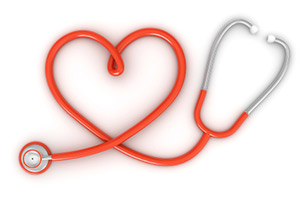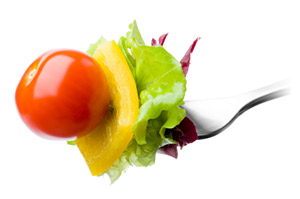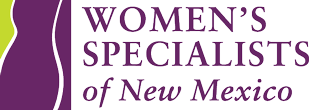Exercise is an important aspect of maintaining good health. Advantages of exercising include the following:
- increases energy
- reduces stress
- improves mood; decreases premenstrual symptoms
- improves sleep
- maintains or helps lose weight
- strengthens muscles and bones and helps prevent osteoporosis
- increases metabolic rate[
- promotes cardiovascular fitness
- decreases daily aches and pains
- increases flexibility
How to Get Started

- Get your doctor’s okay, especially if you are overweight, have high blood pressure, have a history of chest pain or shortness of breath.
- Choose something that fits your lifestyle and interests, e.g., dancing, mall walking, roller or ice skating, swimming, etc.
- Begin slowly and work up gradually.
- Exercise at least three times a week, 20 to 30 minutes each time. Daily exercise is best.
Aerobic Exercise
This implies that the activity or exercise is done continuously and rhythmically and at an intensity that causes the heart to beat faster. To be considered aerobic exercise, the activity has to be done for at least 30 minutes at a time.
To gain the most out of aerobic exercise, work out for 30 minutes in your target heart range. To determine your target heart range, subtract your age from 220. Multiply the results by 0.6 – 0.8 to obtain the heart range you should try to achieve while exercising.
Example
Age 32
220-32 = 188
188 x 0.6 = 113
188 x 0.8 = 150

Therefore, target heart rate should range between 113 and 150.
When beginning to exercise, aim for the lower end of the range. As you become more fit, aim for the upper end of your range.
Regular exercise conditions the cardiovascular system to work more efficiently. This will result in lower total cholesterol and an increase in HDL cholesterol. This will cause an overall decrease in one’s risk of heart disease.
Nutrition
Nutrition is an integral part of total health. Good nutrition may prevent or alleviate disease, specifically heart disease, cancer and osteoporosis.
The number of calories one needs is dependent upon one’s height and age. As we age, our metabolic rate slows down and caloric requirements decrease. In general, an average woman needs 2200 calories.
Caloric intake should come from the four food groups. The majority of calories should come from complex carbohydrates (60%). Sources of complex carbohydrates are pastas, cereal, rice, grains, beans, fruit, and vegetables. The rest comes from fat (30%) and protein (10%).
There is a lot in the news about cutting back fat intake and counting fat grams. Fats should comprise only 30% of our total caloric intake. This is equivalent to 73 grams of fat in a 2200 calorie diet. To determine the number of calories of fat in a food source, multiply the number of grams of fat in a serving by 9 and divide this product by the number of total calories. If more than 30% of the calories are from fat, the food is high in fat. But, not all fats are created equal. There are three types: saturated, polyunsaturated, and monounsaturated. The bad fats are saturated fats and they are mainly found in animal foods, coconut oil and palm oils. Cheese, eggs and whole dairy products contain saturated fats. Fats and cholesterol are closely linked and high cholesterol levels are associated with increased risk for heart disease. Decreasing the amount of fat we eat, specifically saturated fats, will help decrease cholesterol and thus, heart disease risk.
of the calories are from fat, the food is high in fat. But, not all fats are created equal. There are three types: saturated, polyunsaturated, and monounsaturated. The bad fats are saturated fats and they are mainly found in animal foods, coconut oil and palm oils. Cheese, eggs and whole dairy products contain saturated fats. Fats and cholesterol are closely linked and high cholesterol levels are associated with increased risk for heart disease. Decreasing the amount of fat we eat, specifically saturated fats, will help decrease cholesterol and thus, heart disease risk.
Adequate calcium intake is important for our bones. The reason why “milk does the body good” is due to the 300mg of calcium in 8oz of milk. Women younger than 25 years of age need 1200 milligrams (mg) each day. Otherwise 1000 mg per day is adequate. However, once a woman is postmenopausal and is not taking hormone replacement therapy, 1500 mg per day is recommended. Calcium can be obtained through additional dietary sources or supplements.
Last but not least is adequate water intake. We should all drink 64 ounces a day. This is equivalent to eight glasses. Keeping well hydrated helps the cells of our body function better.
Nutrition Counseling and Healthy Weight Reduction
Address: 717 Encino Pl N.E. Albuquerque, NM 87102
Phone: 505-841-1778
Address: 1717 San Mateo Blvd. NE, Albuquerque, NM 87110
Phone: 505-266-5786
Address: 6301 Forest Hills Drive NE, Albuquerque, NM 87109
Phone: 505-823-8320
Note: Consult your insurance health plan for additional programs.
Health Clubs and Fitness Centers
| Defined Fitness | |
|---|---|
| Bosque Club | 505.899.0086 |
| Mesa Club | 505.836.6000 |
| Metro Club | 505.888.7097 |
| Sandia Club | 505.296.7000 |
| Rio Club | 505.800.5210 |
| Hilltop Club | 505.892.4080 |
| New Mexico Sports and Wellness | |
| Del Norte | 505.857.0125 |
| Downtown | 505.242.1500 |
| Highpoint | 505.293.5820 |
| Midtown | 505.888.4811 |
| Riverpoint | 505.897.3716 |
| City of Albuquerque Swimming Pools (Water Aerobics) | |
| Additional Information |


 Online Scheduling Request
Online Scheduling Request 